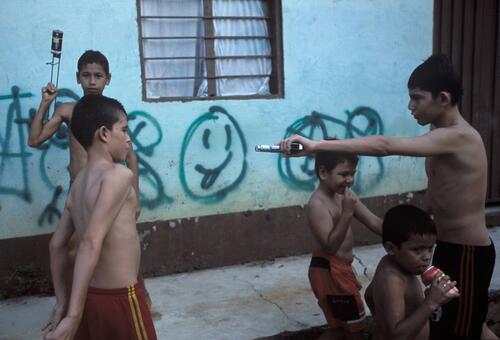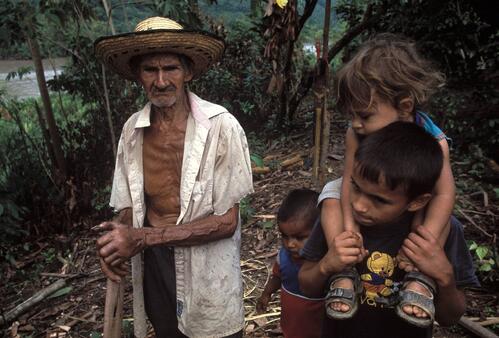Executive Summary
Colombia has entered its fifth decade of violent conflict. Internal displacement has reached unprecedented levels, with over three million displaced since 1995. Massacres, executions, intimidation and the massive consequent fear have become an inescapable part of everyday life for Colombians living in conflict affected areas. The homicide rate for males between the ages of 15 and 44 stands at a startling 221 per 100,000. And violence is now also the leading cause of death for women between 15 and 39 years old (17 per 100,000) overtaking complications from pregnancy and childbirth. That said, the human suffering caused by the Colombian conflict goes well beyond statistics and medical data. The stories of Colombians — patients, health workers, and community members — portray a cycle of violence and displacement without end: forced displacement from rural areas to violent urban slums, and then return to the very same conditions that caused them to flee in the first place.
Arguably, the most worrisome feature of this conflict is the way in which violence has become entrenched in every aspect of social life, normalized in daily existence. The weight of this burden and its negative impact on people’s well-being and quality of life cannot be overestimated.
People who live in conflict zones in rural Colombia are often perceived as supporters of the armed actors who operate locally. In this way, ordinary citizens become stigmatized and identified with armed actors on all sides of the conflict. This situation creates not only a direct threat to their lives but also limits their ability to travel safely, even in cases of a medical emergency. Due to the conflict, health services barely exist in these isolated communities. Immunization programs fail to extend vaccination coverage into rural Colombia, with coverage rates for some diseases such as polio as low as 1%. The resulting risk of infection or outbreak constitutes a severe public health risk to populations in some of these areas.
People forced by violence to flee their rural home areas typically settle in urban slums. There they must struggle against the harsh conditions, lack of opportunity and rampant violent criminality of the urban slum environment. Their displacement sadly creates another form of stigma, a mark for life, to the point where many displaced are unwilling to register for assistance programs out of fear of the stigma. In these slums, provision of health services for displaced persons is inadequate. Vaccination coverage among displaced populations is disproportionately lower than national averages. Even so, the far greater risk of an outbreak of infectious disease comes from the omnipresent appalling living conditions.
Physical health is already one serious issue. Yet the greatest health impact of the conflict among the displaced is upon their mental well-being, and consequently upon their ability to adjust and cope with the formidable challenges of flight, displacement, and return. Ironically, mental health care receives woefully low priority in these places of greatest need, and some provinces have almost no psychologists available to provide clinical care.
The return of the internally displaced persons to their home areas is often perceived as a positive development, an escape from displacement and a return to “normality” for the families involved. Although this may be the case for some, return is often a traumatic experience, one presenting new threats and continued instability, with a demonstrable impact on people’s mental sftate. In the end, Colombia’s cycle of violence often transforms the salvation of return into yet another phase of temporary displacement. Programs promoting return by the government and independent agencies should be scrutinized to ensure they respond effectively to the complexity of the problem.
In addition to their struggle to survive the pervasive violence, people who have been displaced and people who have returned home both struggle with the limited and short term assistance available. Insufficient commitment is made by the Colombian government and many other agencies to support the needs of the victims of Colombia’s conflict.

Médecins Sans Frontières (msf) has worked in Colombia for 21 years providing medical care to civilian populations isolated by the conflict, and more recently to those internally displaced in urban settings. This report seeks to raise awareness of the human cost of the conflict by giving a voice to those who bear the brunt of its harsh consequences. As such, this report does not present an in-depth study on the medical impact of Colombia’s conflict, but rather an overview of violence as a major public health concern. It highlights the direct consequences of violence upon people, consequences demanding greater attention and priority from the Colombian Government and other policy makers.





